With the exception of old movies, most of us are used to seeing our screens in full color. However, grayscale — in which you see nothing but black, white, or shades of gray — can be useful, even when it comes to your smartphone.
To begin with, people who are intensely colorblind will find a screen that has been switched to grayscale much easier to work with (since otherwise, certain colors can be difficult to distinguish). It may be good for the rest of us as well because grayscale is said to be much easier on the eyes — so using it at night could give your optics a rest. (In addition, forcing all your videos to go grayscale might finally convince you to put down the phone and get some sleep). If used during the day, you might be less tempted to pick up your phone rather than pay attention to your work or other parts of your life.
Here’s how to switch the displays on your iPhone, Samsung Galaxy phone, and Google Pixel to grayscale. (If you have an Android phone from a different manufacturer, the directions should be similar to that for the Pixel.)
Grayscale on an iPhone
Switching your screen to Grayscale on the iPhone is a very simple process. Currently, you can find it as a feature in the Accessibility section.
- Select Settings > Accessibility > Display & Text Size > Color Filters
- Toggle Color Filters on and select Grayscale
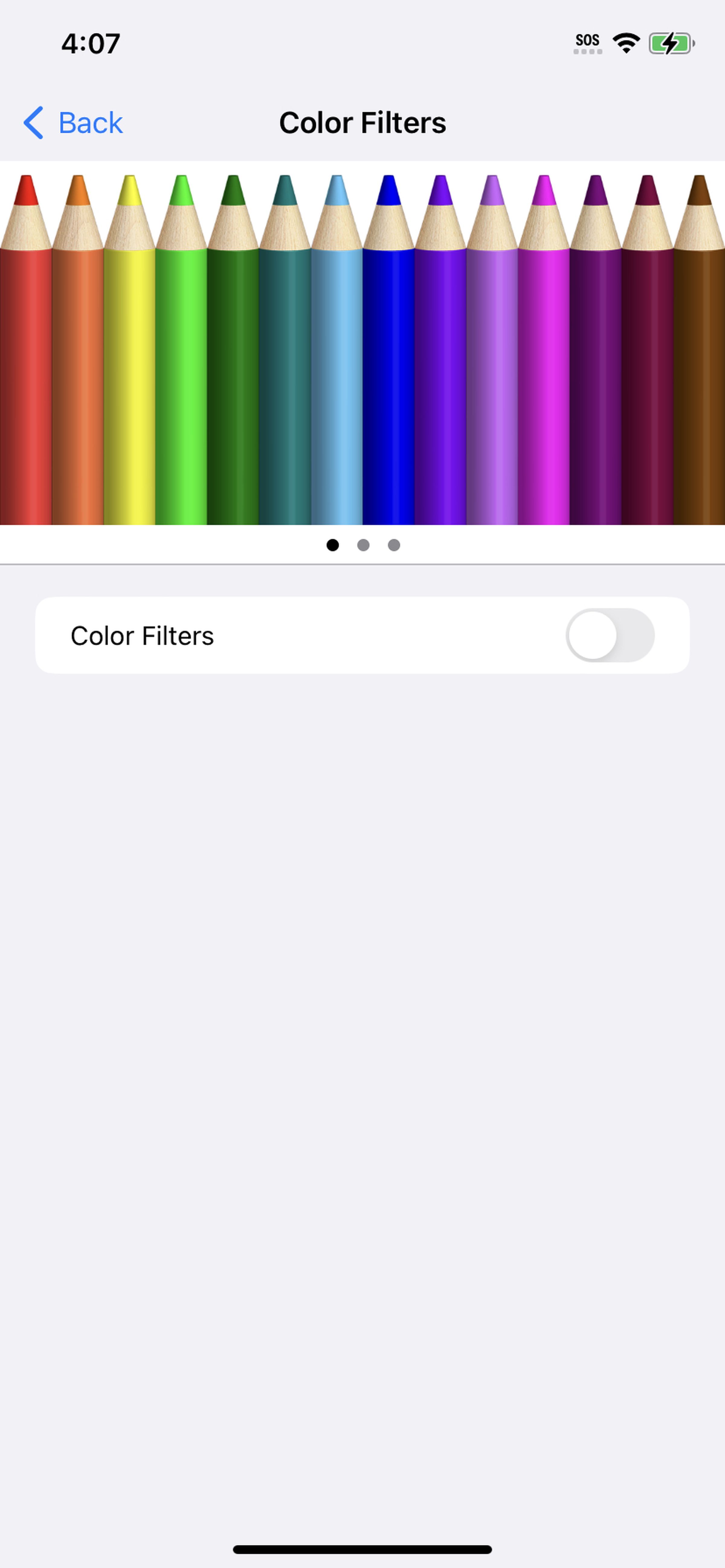
You won’t see the options for Color Filters until you toggle it on.
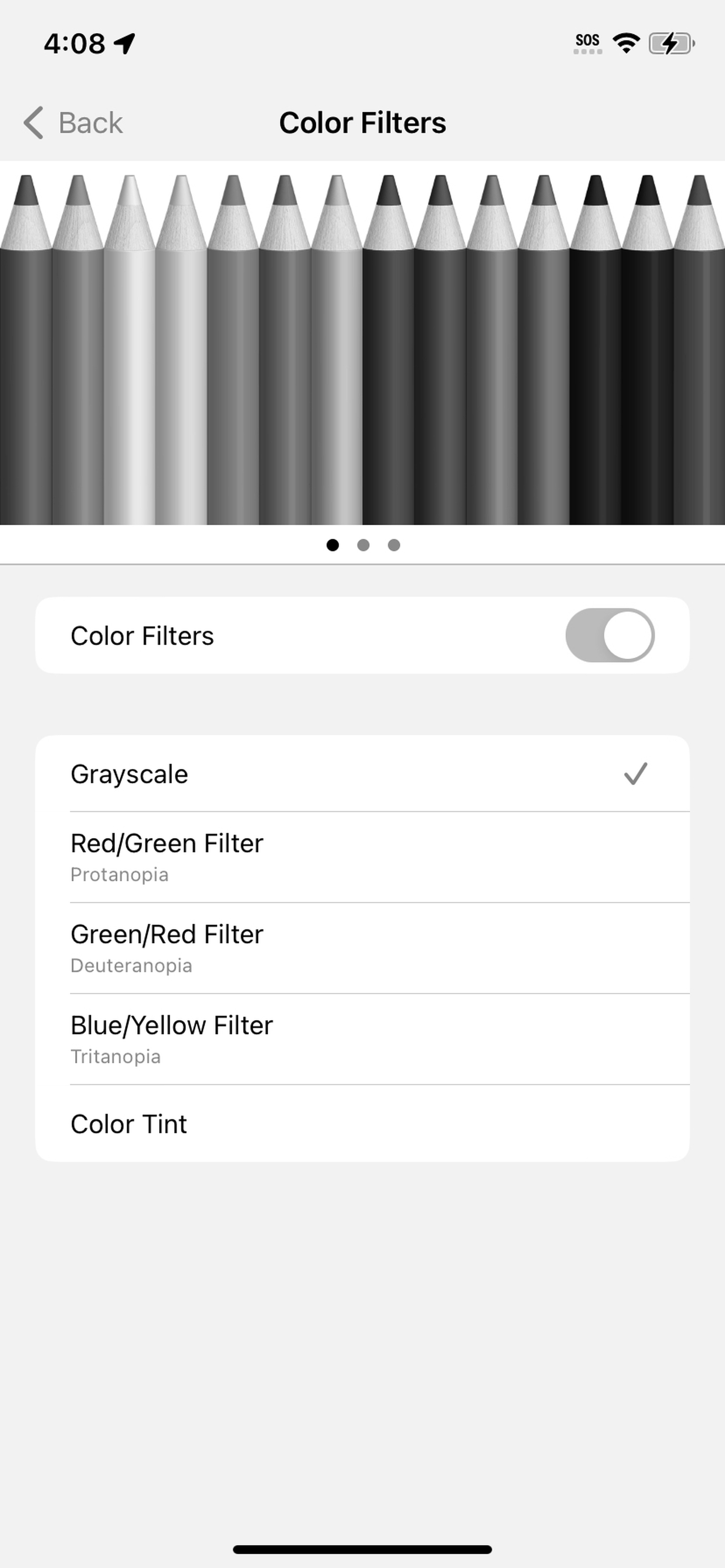
When you toggle Grayscale on, the result is a fully grayscale screen.
There are also various ways you can trigger grayscale on and off using your iPhone’s Shortcuts. To begin with, if you want to trigger it via a triple-click on your side (power) button:
- Set grayscale as your color filter, as described above. (You don’t have to keep it toggled on; just make sure it is set as the color filter.)
- Go back to the Settings > Accessibility page and select Accessibility Shortcut.
- Tap on Color Filters so that it has a green checkmark.
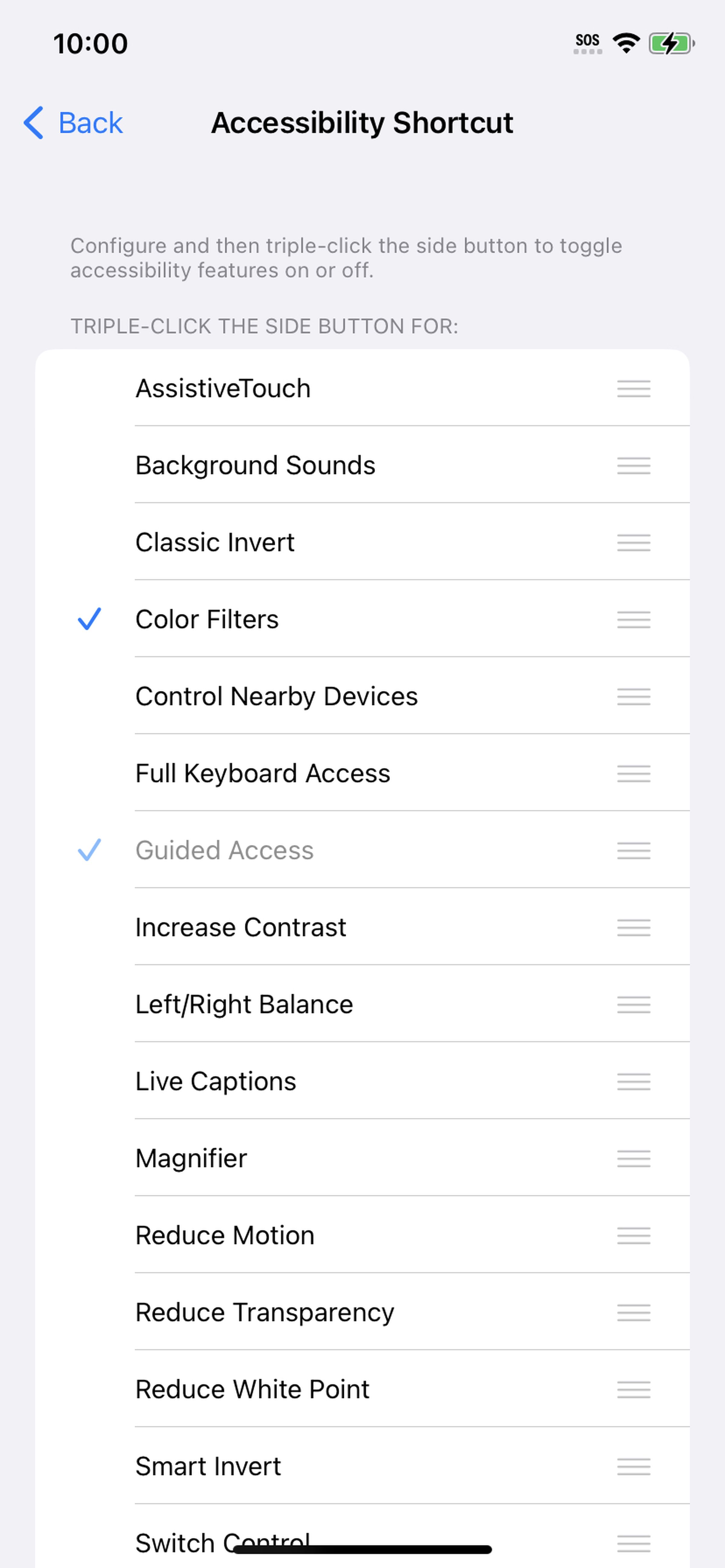
Once you’ve set grayscale as your color filter, you can create an Accessibility Shortcut for that filter.
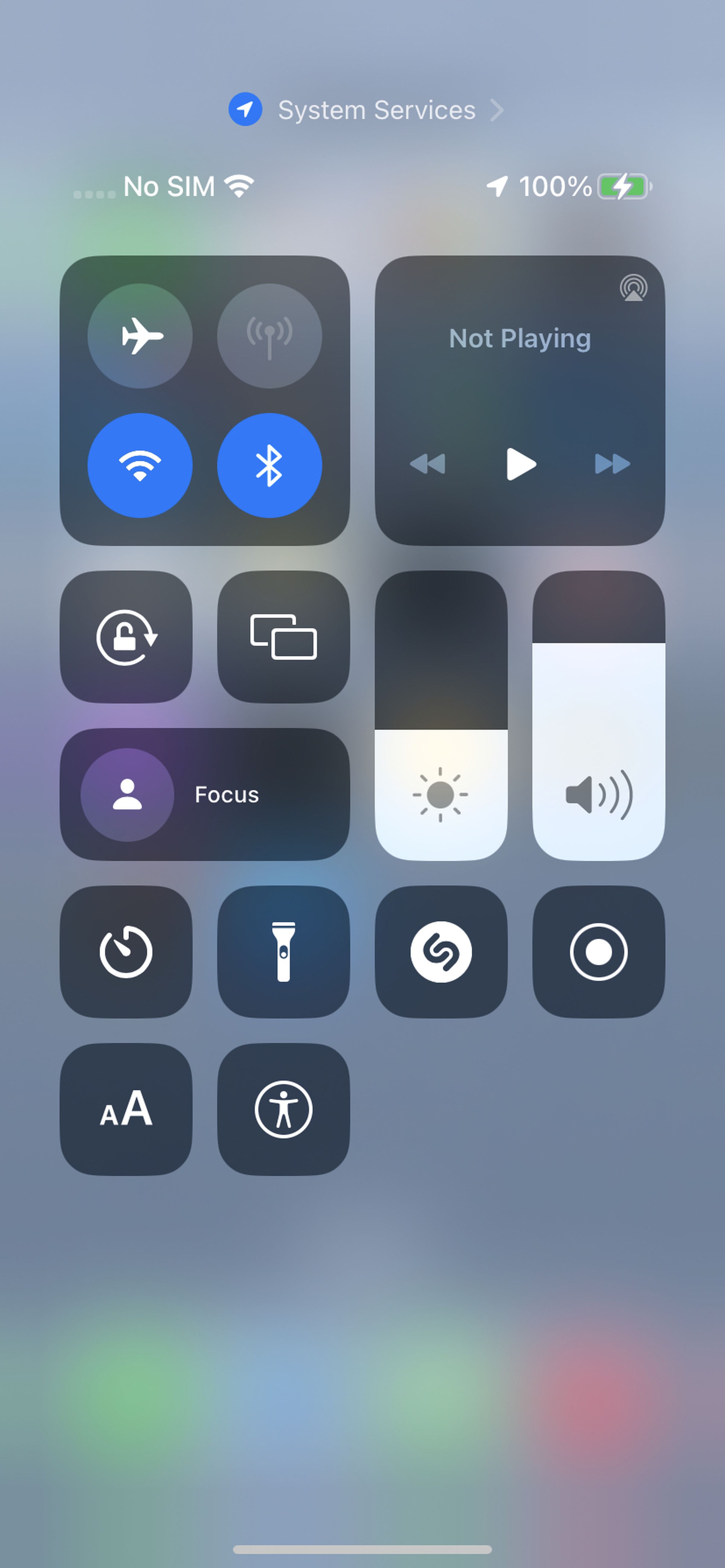
You can add an Accessibility Shortcut to your Control Center.
To add a button to your Control Center, first set up the Accessibility Shortcut as described above. Then:
- Go to Settings > Control Center > Included Controls > Accessibility Shortcuts
- The button (the figure of a person within a circle) will then appear when you swipe down to access the Control Center; tap on it, and any options checked in the list of Accessibility Shortcuts will be available.
You can also create a grayscale Shortcut, which you can then turn on at certain times, such as during Sleep mode or when you’re in Focus mode. To create the Shortcut:
- Open the Shortcuts app and tap on the plus sign in the upper right corner.
- Tap Add Action
- Type Set Color Filters in the search box until it is listed and select it. You will be brought back to the actions page, and you will see the action Turn color filters On.
- If you want, you can change Turn to Toggle or Ask Each Time, and you can change On to Off.
- Tap Done.
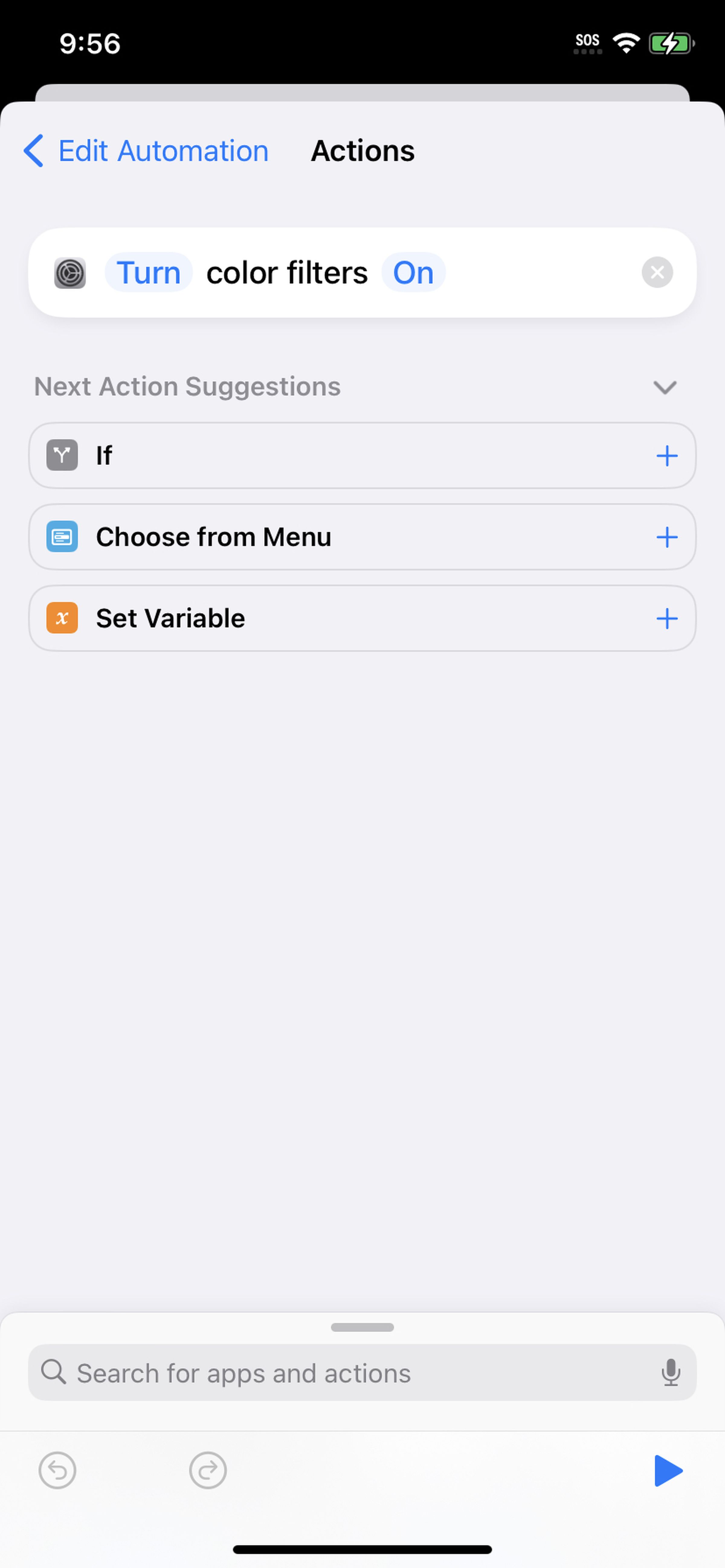
You can create a Shortcut that will turn your color filters (i.e., the grayscale filter) on.
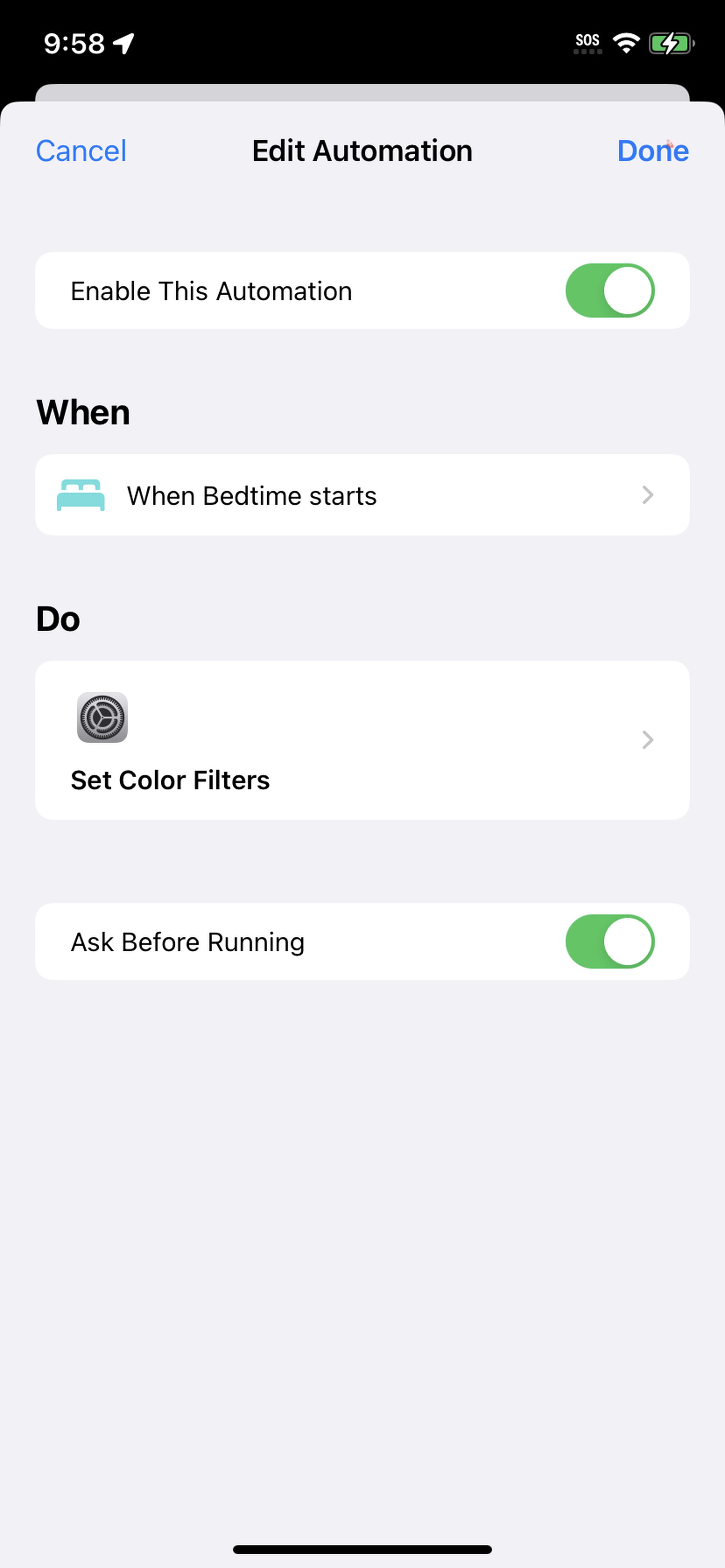
When you enable this automation, your screen will go to grayscale when Bedtime starts.
If you want to automatically turn on grayscale at night or associate it with a Focus Mode during working hours, then you can also do that via the Shortcuts app. For example, let’s say you want to create a Shortcut that will turn on grayscale at night when you’re supposed to be sleeping:
- Open the Shortcuts app and tap the Automation icon at the bottom of the screen
- Tap Create Personal Automation
- Tap Sleep > Bedtime Begins (or, if you prefer, Wind Down Begins) and select Next
- Select Add Action
- Type Set Color Filters in the search box until it is listed and select it, then select Next
- The next screen will show that your new automation will begin when Bedtime starts and that it will set the color filters. You can toggle Ask Before Running on or off. When you’re satisfied, select Done.
You can use the Shortcuts app to set all sorts of automations or other ways to enable or disable grayscale (or other conditions). Go ahead and experiment.
Grayscale on a Google Pixel phone
If you use a Pixel or other Android phone, you can have two different ways that you can adjust the screen to go to grayscale, depending on what you want to use it for.
If you want to go grayscale at night to relax your eyes (or discourage yourself from using your phone), you can use Android’s Bedtime mode to have your phone automatically go to grayscale at a specific time. (If you haven’t set up Bedtime mode yet, here are some instructions.)
- Go to Settings > Digital Wellbeing & parental controls > Bedtime mode
- Scroll down to and select Customize > Screen options at bedtime
- Toggle Grayscale on
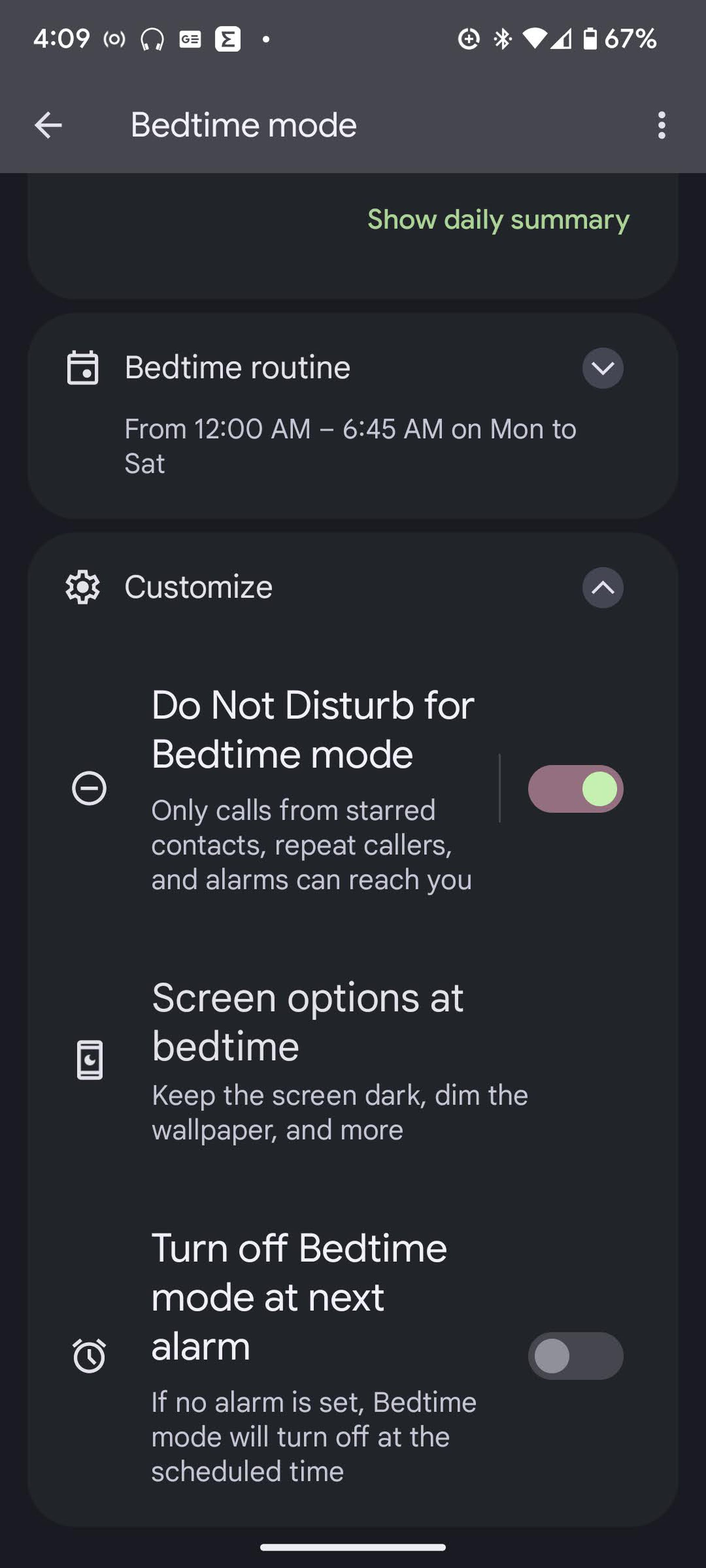
To set up Bedtime mode for grayscale, tap on Customize.
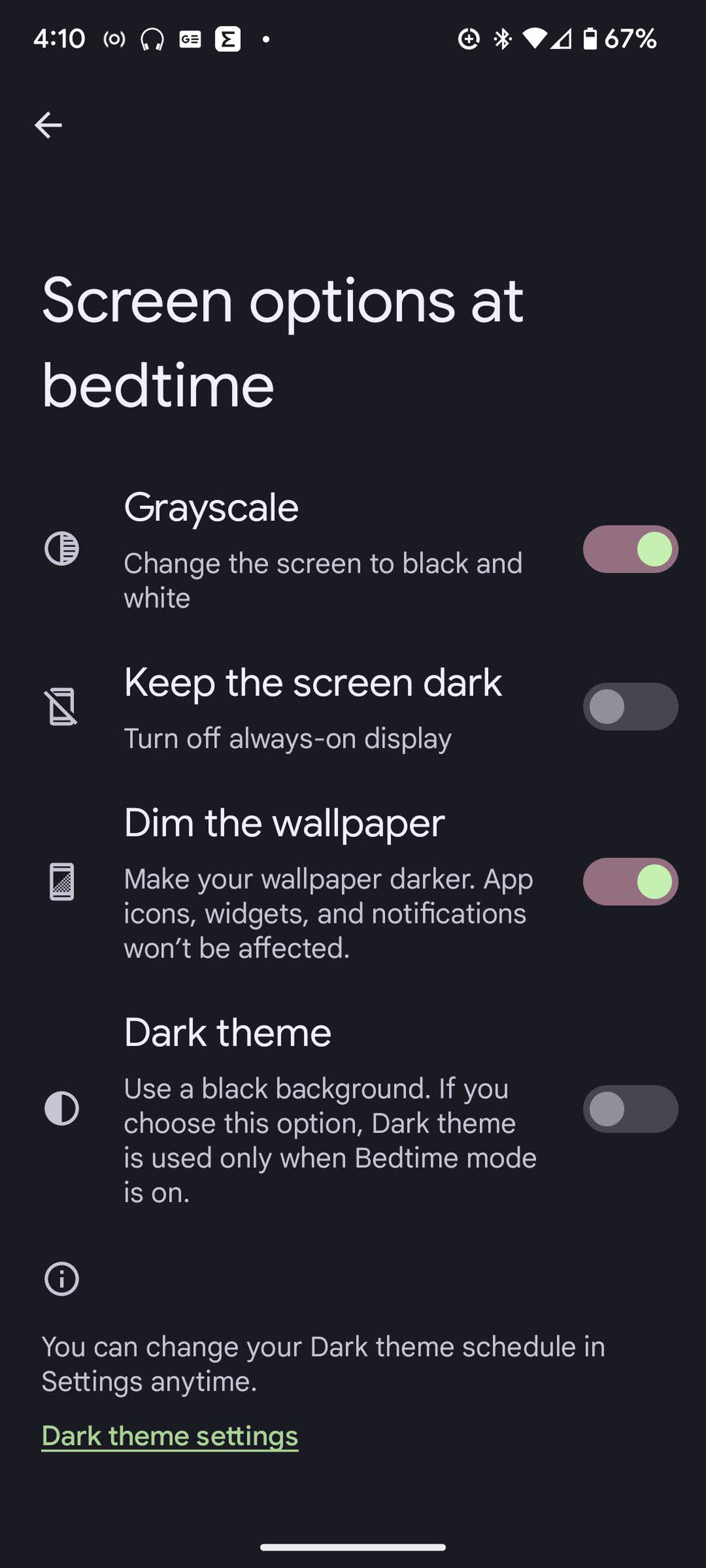
There are several screen options for bedtime, including grayscale and dim the wallpaper.
What if you want the screen to be grayscale all the time — or if you want to be able to toggle it on and off any time you wish? This is possible as well by using the color correction feature in Android’s Accessibility toolkit.
- Go to Settings > Accessibility > Color and motion
- Select Color correction, scroll down, and select Grayscale.
- Go back up to the Use color correction button and toggle it on.
If you want to switch to grayscale anytime you like but don’t want to go through all those menu choices each time, you can make it easier by using your Quick Settings menu or by adding a small “accessibility button” that will continuously float on your screen. In either case, keep in mind that grayscale isn’t the only type of color correction available, and so before you set either of these options, you need to go to the Color correction menu as described above and select Grayscale.

The color correction menu lets you turn all your screens to grayscale.

The accessibility button on the right side of the screen will toggle color on and off.
To add color correction to the Quick Settings menu:
- Swipe down from the top of your display twice to show the Quick Settings menu
- Tap the small edit icon at the bottom right of the menu (it looks like a pencil)
- Find the Color correction tile and hold and drag it up to add it to your active tiles
To create an accessibility button:
- Follow the directions above to the Color correction page
- Scroll down to the bottom of the screen, and toggle on the Color correction shortcut
(Interestingly, I found that when I created the accessibility button, my Pixel 6 automatically added Color correction to my Quick settings menu.)
Grayscale on a Samsung Galaxy phone
Similar to the Pixel, Samsung has a Sleep mode. However, Samsung’s mode automatically goes into grayscale mode (rather than giving you any other choices).
- Go to Settings > Modes & Routines > Sleep
- On the Sleep page, toggle on Turn on automatically (and set your schedule if you haven’t already).
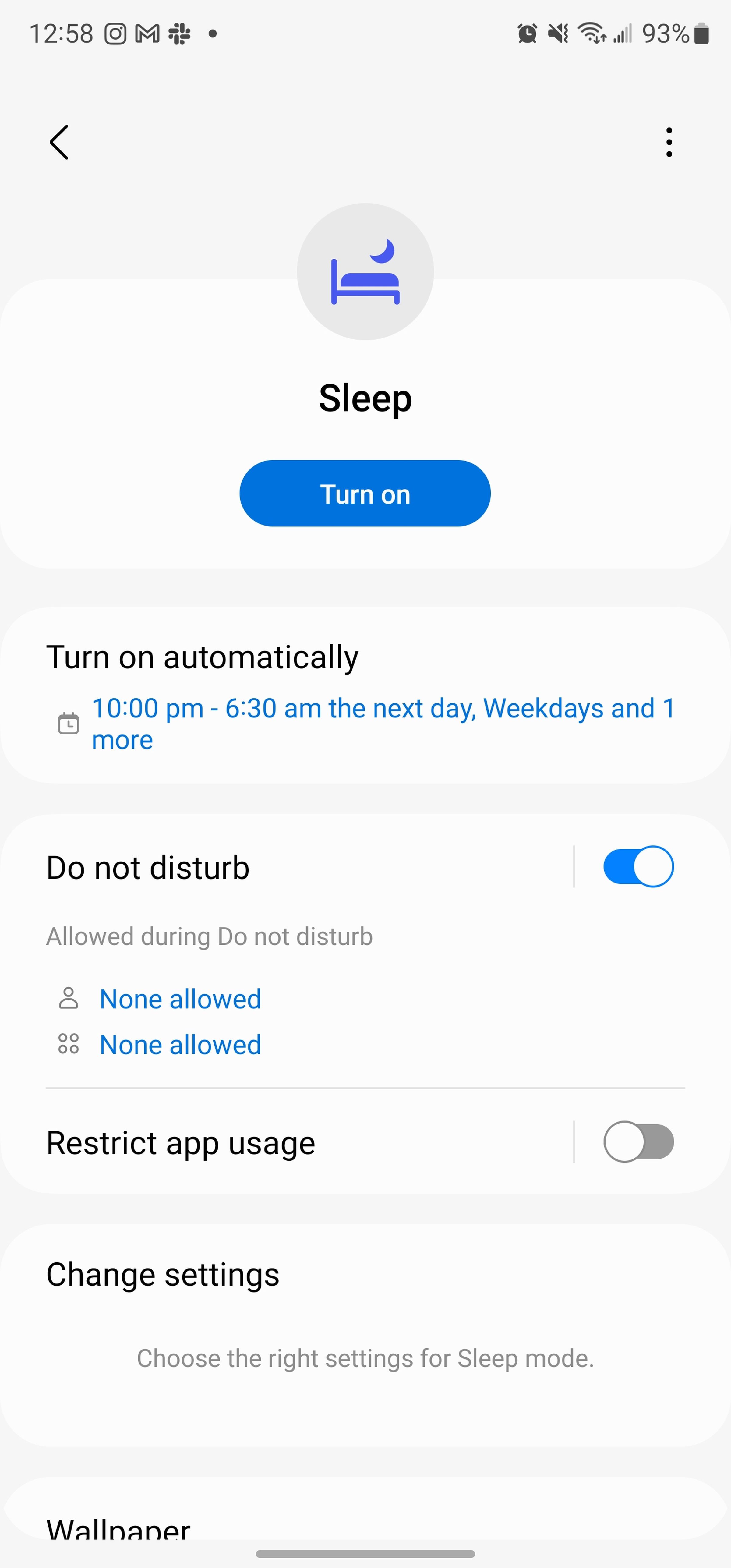
When Sleep mode goes on, your screen will automatically go to grayscale.
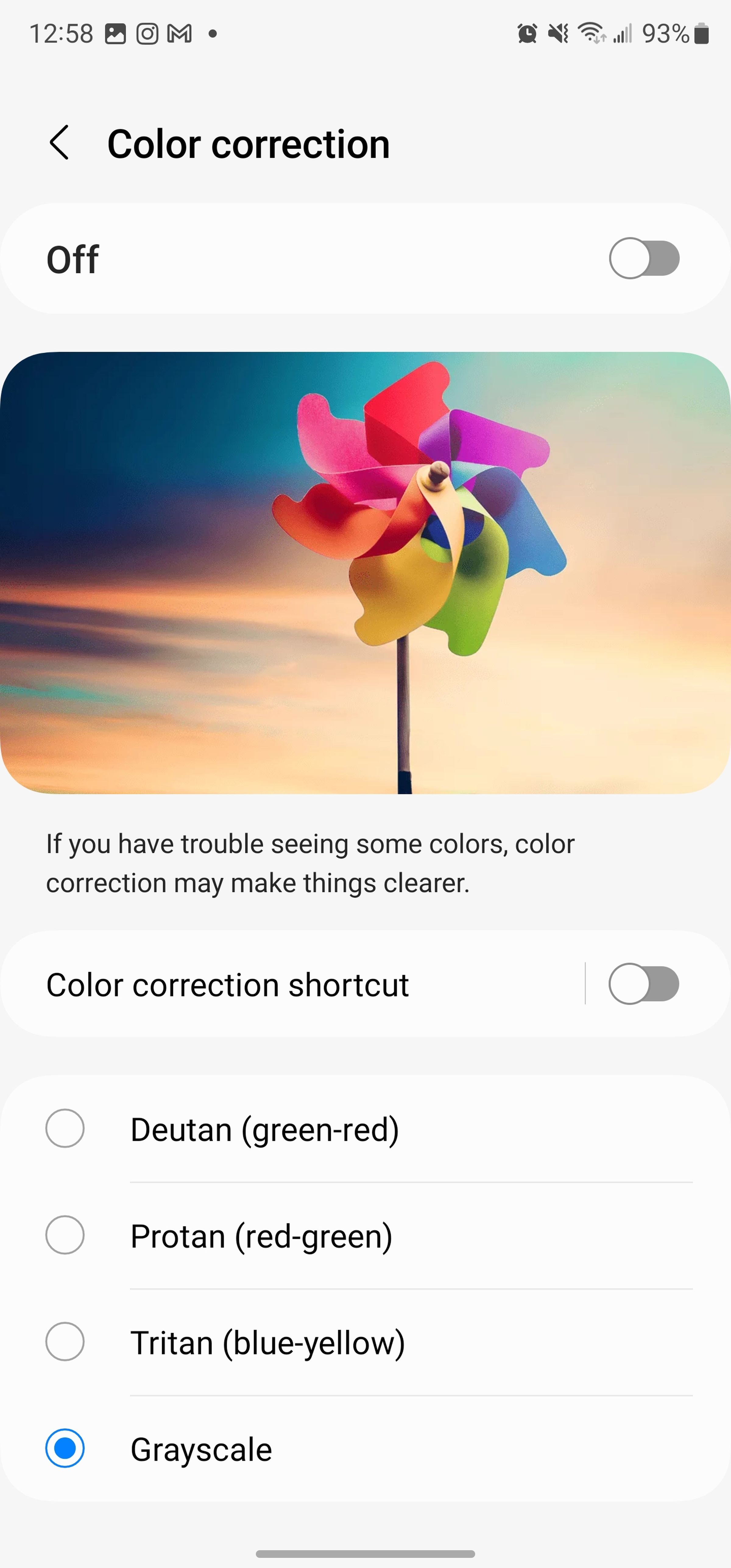
Samsung’s accessibility tools let you turn your screen grayscale at any time.
Samsung also has a way to turn on grayscale using its accessibility tools.
- Go to Settings > Accessibility > Visibility enhancements
- Select Color correction and tap Grayscale.
- Toggle color adjustment on at the top of the page.
- You can also create a shortcut similar to that on a Pixel.
You can also turn grayscale on and off using the Color correction tile in your Samsung’s Quick Settings menu. As with other Android phones, you should first set your color adjustment to grayscale in the Accessibility area.
- Swipe down from the top of your display twice to show the Quick Settings menu
- Tap the add button at the bottom of the menu
- Find the Color correction tile and hold and drag it to your active tiles
